A name, an English personality, who created amplifiers that have marked the history of rock and metal since the second half of the last century: Jim Marshall.
Among the various models that contain its characteristic sound we find the JTM-45, JMP, Super Lead Plexy, JCM 800, Silver Jubilee, etc. Heads used over the years by the likes of Slash, Jimmy Page, Eddie Van Halen, Jeff Beck, just to name “some” guitarists … Lots, lots of stuff! 😀
In the 1980s Marshall tried to replace expensive and time-consuming tubes with mosfet-type transistors. In theory, these should have produced a similar sound, but without all the problems caused by tubes. Successful experiment? Yes, but in part. The sound of these solid state circuits is really great, even if you don’t get to the tonal complexity of the tubes.
In any case, they are zero maintenance and are much lighter than the valve type ones. Yeah, a lot of stuff!
Literally bewitched by those little beasts that are the Marshall Lead 12, both stack that combo, I have decided to buy a very rare 3310, also with mosfet, but with 100 W!
In theory, the Marshall 3310 should be the tested format version of the Marshall 5100 combo, from 100 W, produced between the 80s and 90s.
Well, I can say that the Marshall 3310 is literally nowhere to be found, as the two dedicated speakers with 1×12 “cone, found with a lot of patience separately, were unobtainable. which turn it into a full stack.
But is all this effort worth it in the end? Yup! This is an excellent amp! But different in some ways from the small 12Ws.
It’s a different amp, for the better in some ways: it always has the typical crystalline Marshall sound that makes anything twang in the clean, but also has a body and bass unknown to the two younger siblings.
Features
The marshall 3310 is a clean, distorted dual-channel head, switchable via a supplied pedal. The pedal also controls the activation of the reverb, common to both channels.
The clean channel has three-band equalization adjustment, the classic bass, middle and treble, together with a volume adjustment (which does the function of a preamp, in my opinion)
The distorted channel, instead, it has only the tone, volume and gain adjustment, but no three-way equalizer.
Common to both channels is the reverb and a volume adjustment (which acts as a master).
Unlike the classic Marshalls, the input is unique, instead of the common double input High and Low.
On the back there are a send and a return, a lineout with volume adjustment, and the output for the two speakers, which mount Celestion G12T-75 8 ohm cones.
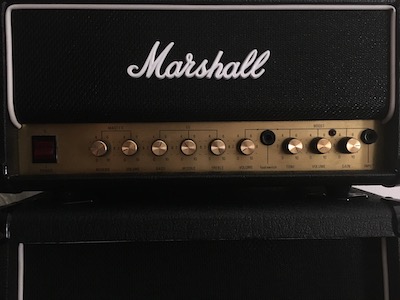
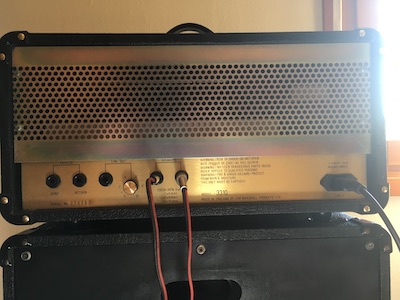
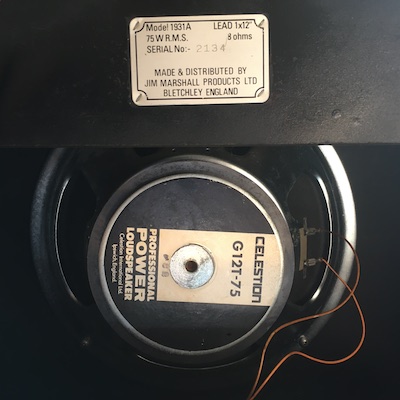
Sound
And here comes the fun. In the sense that the sound is really beautiful!
Let’s go in order.
Jim Marshall’s amps were born around 1962, the first model of which was the JTM-45 (practically one of the most iconic amplifiers in history), born from the scheme of the 1959 Fender Bassman, from which the circuit differs only for a few components. An example was the valves, replaced due to practical problems of finding the elements themselves rather than due to design choices. The cones used by the Fender Bassman instead were the 10-inch Spense (only 15 watts each, Fender had to use four in parallel). Marshall chose to adopt a single 12-inch English cone (Celestion), placing it in a closed case. The sum of all the changes made resulted in an amplifier with a distinctive tone and much more prone to distortion than the original Bassman.
However, the distorted sound you get from pushing a Marshall amp to the max is only one aspect of these amps. What many don’t know is that Marshall amps also have spectacular clean, in my opinion even better than many Fenders. And the cleanliness of the Marshall 3310 is spectacular!
So let’s start with the clean channel, which is what I think it really deserves.
The sound is big, full-bodied, present but never muddy. The highs are all there and the characteristic crystallinity of the Marshalls who made history with that sound that enhances the twang of single coil pickups, but also of some humbuckers, is distinctly present in the Marshall 3310!
Really, tried with a Stratocaster , a Telecaster and a few Gibsons, the sound manages to be thick without ever being muddled, maintaining an incredible dynamics and an incredible attack. One would have to keep playing forever just to enjoy how the guitar responds.
Incredibly, when you go up with both the clean channel volume and the master volume, the head stays clean! Which might be a disadvantage for some, but in my opinion it’s a big plus, because it allows you to shape the sound as you want with an external effects chain, at all volumes.
Well, that’s exactly how I personally use any amp (or amp simulation in some cases in the room, as in the case of the Zoom MS-50G), that is, putting my entire chain of effects before the clean channel.
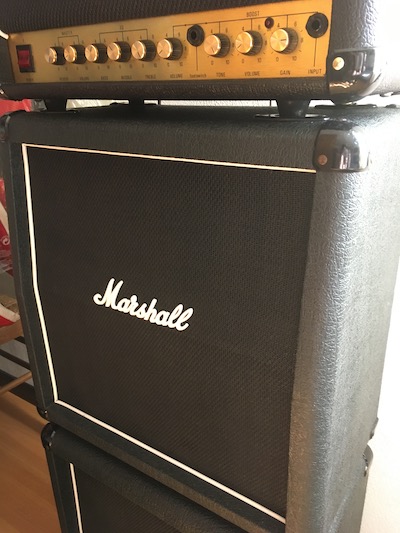
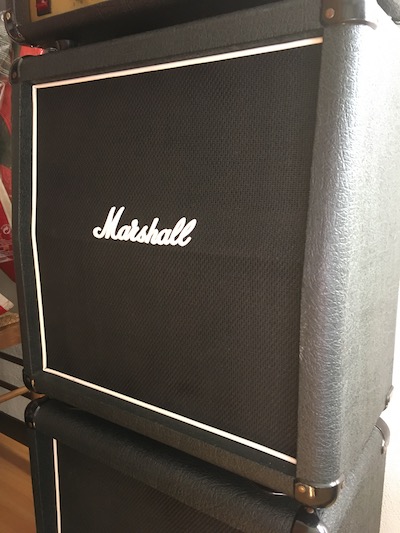
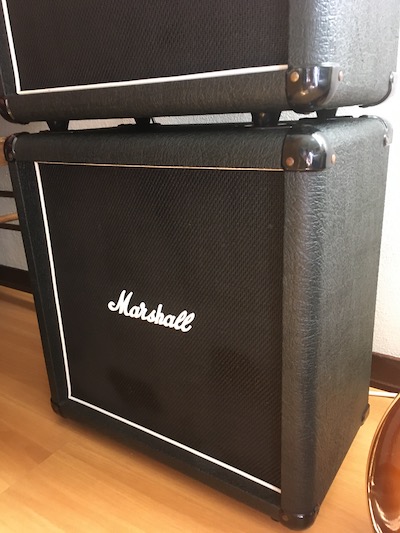
The Marshall 3310 digest pedals very well. It reacts very well to both modulations and various distortions, from the lightest to the heaviest ones. As a good clean sound should be, those characteristics of crystallinity and body, while maintaining the clarity of individual notes, remain. Obviously, if the base is good, it is easier for the final result to be too … And here we start from an excellent base, in my opinion.
The distorted channel, on the other hand, did not impress me. It’s not bad, let’s understand, but it doesn’t give me that wow effect that gave me the cleanliness. It does not have the same dynamics, nor the same blow. Distortion should also probably be considered as it is a very personal taste factor. Currently, I much prefer the distortions I can get with my single pedals passing through (the excellent) clean channel rather than the distortion coming straight out of the Marshall 3310’s distortion channel.
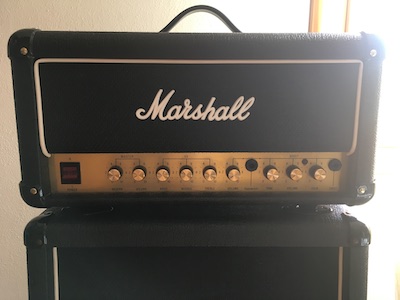
It remains to say about the spring reverb. Here, too, it goes very much to personal taste. Personally I don’t use reverb, but only a bit of delay with a tail that replaces a reverb. Again, the modulations I can get from my Zoom MS-50G are much nicer, to my personal taste, than the reverb of the Marshall 3310. Which therefore stays off.
One final note goes to the final power. In theory, the Marshall 3310 should deliver 100W of power. My trusted technician Paolo Mazza, from Padua, who has refurbished this spectacular head, told me that he had done some tests with special loads and that however in reality he only managed to pull out 50!
Johan Segeborn is a real Marshall fan of mosfets, and has made several videos on youtube. In this he introduces the Marshall 5100, which is in fact the 12 “single cone combo version of the Marshall 3310:
Johan Segeborn è un vero appassionato di Marshall a mosfet, e ha fatto diversi video su youtube. In questo presenta il Marshall 5100, che di fatto è la versione combo a cono singolo da 12″ del Marshall 3310:
Conclusions
The Marshall 3310 is an extraordinary amp, especially if you also combine the two 1931a and 1931b speakers with the 3310 head.
The sound that comes out is that of Marshall’s big but still crystal clear, with a fantastic reserve of clean even at volumes where a Marshall usually shouldn’t have.
The reverb and the distorted channel have not made me crazy, but I don’t worry about it, I put my effects before the clean channel for an incredible sound.
Used is practically unobtainable, but with a lot of perseverance you can succeed. Searching both on the music market and on subito.it or reverb.com some opportunities may be found.
Do not think you will find the head immediately correlated with its speakers, you will probably have to look for them separately, as I did, but it’s worth it, trust me, even only aesthetically!
Published on musicanza.it on: 18/12/2020.
